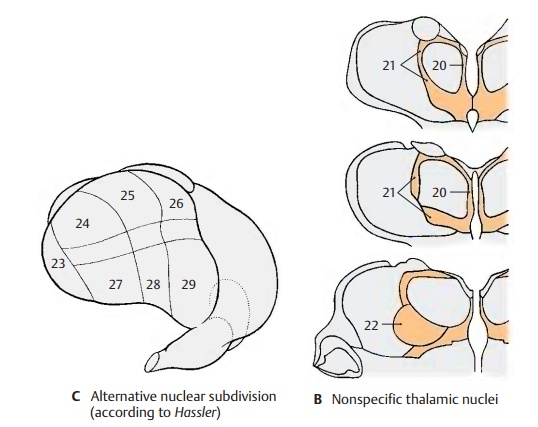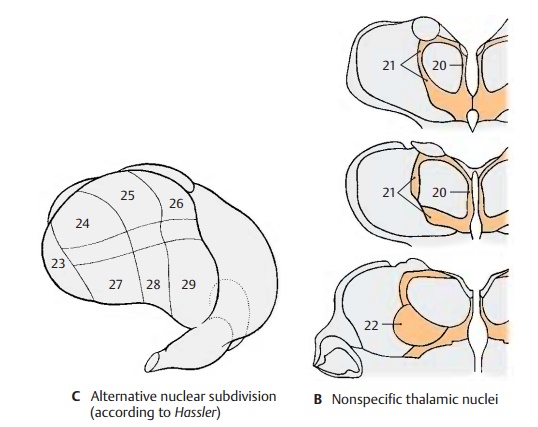Chapter: Human Nervous System and Sensory Organs : Diencephalon
Nonspecific Thalamic Nuclei - Dorsal Thalamus

Nonspecific Thalamic Nuclei (B)
These
nuclei have fiber connections to the brain
stem, to the diencephalic nuclei,
and tothe corpus striatum, but no
direct connec-tion to the cerebral cortex has been demon-strated anatomically.
Their neurons are not injured by removal of the entire cerebral cortex; they
are cortex-independent. Two groups of
nuclei are distinguished:
The median nuclei (nuclei of the
centralthalamic gray matter) (B20),
which aresmall cell clusters located along the wall of the third ventricle
The intralaminar nuclei (B21),
which are embedded into the internal medullary lamina; the largest of them is
the cen-tromedian nucleus (B22)
Electrical
stimulation of these nuclei does not lead to excitation of individual cortical
areas but to changes in the electrical activity of the entire cerebral cortex.
Hence, they are called nonspecific
nuclei. The pathways through which cortical activity is influenced are
unknown. The ascending pathways of the reticular formation (ascending
activat-ing system, p. 146) terminate in the in-tralaminar nuclei.

Alternative Nuclear Subdivision (C)
The subdivision of the thalamus according toHassler differs from the traditional arrange-ment mainly with respect to the subdivision of the lateral nuclear complex. The nucleus located most orally is called the lateropolarnucleus (C23). Then follows the division intodorsal, ventral, and central zones. These three zones are further divided into oral, in-termediate, and caudal segments. This re-sults in the following nuclei: dorsally lie the dorso-oral nucleus (C24), the dorsointerme-diate nucleus (C25), and the dorsocaudal nu-cleus (C26), and ventrally lie the ventro-oral nucleus (C27), the ventrointermediate nu-cleus (C28), and the ventrocaudal nucleus(C29).
Related Topics